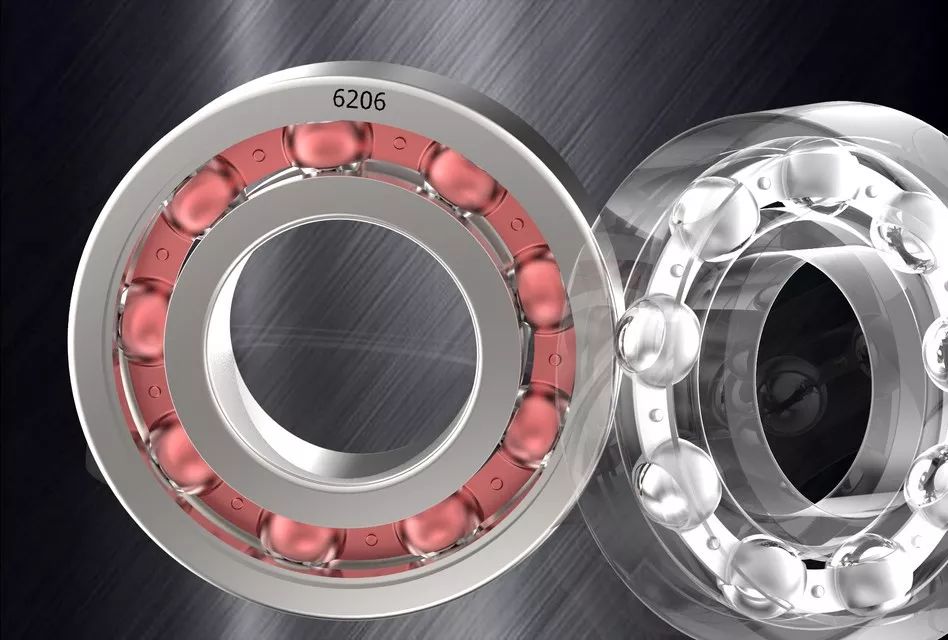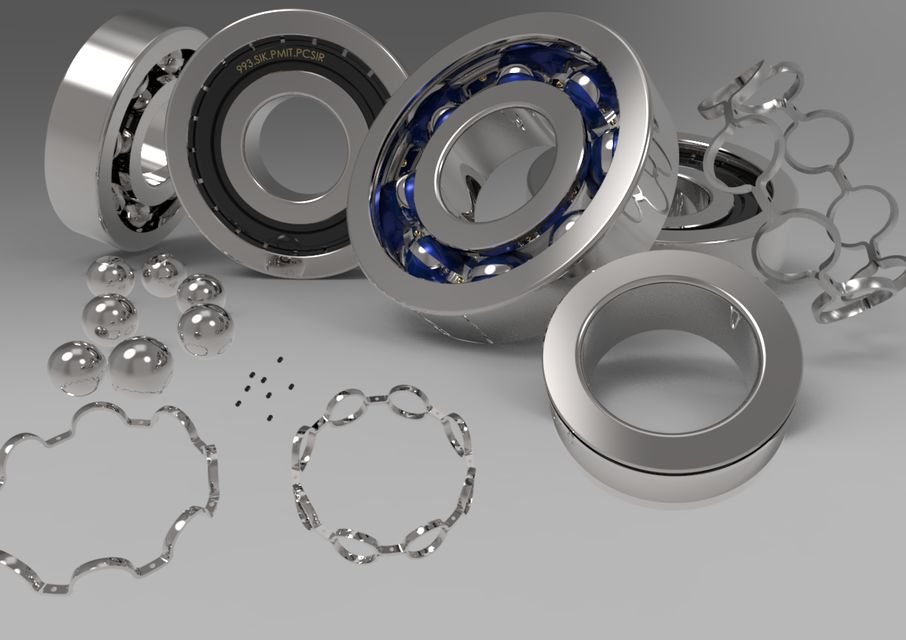"Various types of bearings have different characteristics due to their different designs. Due to the specific installation site of the bearing and the application of the occasion of the variability and complexity, bearing type selection without a fixed pattern to follow, in order to adapt to a host of specific installation site and application conditions for bearing type selection, it is recommended based on the following main factors comprehensive consideration."
Permissible space
When designing machinery, the size of the shaft is generally determined first, and then the bearing is selected according to the size of the shaft. Usually, small shafts choose ball bearings; large shafts choose cylindrical roller bearings, spherical roller bearings, tapered roller bearings (sometimes also can choose ball bearings). If the radial space of the bearing installation part is restricted, the radial section height should be used smaller bearing. Such as needle roller bearings, some series of deep groove ball bearings, angular contact ball bearings, cylindrical roller or spherical roller bearings and thin wall bearings. If the axial space of the mounting part of the bearing is restricted, the width of the bearing with smaller dimensions can be used.
Load
The size of the load is usually the decisive factor in the choice of bearing size. Roller bearings have a greater load carrying capacity than ball bearings with the same external dimensions. Usually ball bearings are suitable for light or medium loads, roller bearings are suitable for heavy loads.
Load mode, pure radial load can be selected deep groove ball bearings, cylindrical roller bearings; pure axial load can be selected thrust ball bearings, thrust cylindrical roller bearings; radial load and axial load (joint load), the general choice of angular contact ball bearings or tapered roller bearings. If the radial load is larger and the axial load is smaller, you can use deep groove ball bearings and inner and outer rings have the edge of the cylindrical roller bearings. If there is also a shaft or shell deformation and installation of poor neutral situation, can choose spherical ball bearings, spherical roller bearings. If the axial load is large and the radial load is small, you can choose thrust angular contact ball bearings, four-point contact ball bearings; such as also requires the performance of the alignment, you can choose thrust spherical roller bearings.

Rotational speed
The operating speed of rolling bearings depends primarily on their permissible operating temperature. Bearings with low frictional resistance and less internal heat generation are suitable for high speeds. If only radial loads are applied, deep groove ball bearings and cylindrical roller bearings can be used to achieve higher speeds. The use of special design of high-precision angular contact ball bearings, can reach a very high speed. The speed of various thrust bearings is lower than that of radial bearings.
Rotational accuracy
For most machinery, the choice of 0 tolerance bearing is sufficient to meet the host requirements, but the shaft rotation accuracy has strict requirements, such as machine tool spindle, precision machinery and instrumentation, etc., should be selected with higher tolerance level of deep groove ball bearings, angular contact ball bearings, tapered roller bearings, cylindrical roller bearings and thrust angular contact ball bearings.

Rigidity
The rigidity of a rolling bearing is determined by the amount of elastic deformation that occurs when it is subjected to load. Generally, this deformation is small and negligible, but in some machinery, such as machine tool spindle systems, the static rigidity and dynamic rigidity of the bearing has a great influence on the characteristics of the system. Generally speaking, roller bearings have a higher stiffness than ball bearings. Various types of bearings can also be “preloaded” to varying degrees to improve rigidity.
Vibration and noise
The noise and vibration of the bearings themselves are generally very low. However, for small and medium-sized motors, office machinery, household appliances and instruments, etc., which have special requirements on noise and smoothness of operation, low noise bearings are usually used.
Axial displacement
The most common way of configuring bearings is to install a set of axially positioned “fixed bearings” at one end of the shaft and a set of axially movable “floating bearings” at the other end to prevent jamming due to thermal expansion and contraction of the shaft. Often used “floating bearings” is the inner ring or outer ring without the edge of the cylindrical roller bearings, when the inner ring and shaft with the outer ring and the outer ring with the housing hole can be used with interference fit. Sometimes can also choose non-separable deep groove ball bearings or spherical roller bearings for floating bearings, but in the installation of the inner ring and shaft or outer ring and shell hole with the choice of clearance with, to ensure that the inner ring or outer ring has enough axial movement of the freedom.

Frictional torque
Ball bearing friction resistance than roller bearing small, pure radial load, radial contact bearing friction resistance small; pure axial load, axial contact bearing friction resistance small; joint load, bearing contact angle and load angle similar to the angular contact bearing friction resistance minimum. In the need for low friction torque instruments and machinery, the choice of ball bearings or cylindrical roller bearings more appropriate. In addition, low friction moment bearings should avoid using contact seals, at the same time, it is recommended to use drip oil lubrication, oil and gas lubrication or other lubrication methods conducive to reducing wear.
Mounting and dismounting
Bearings with cylindrical bore are used in machinery where mounting and dismounting is more frequent. Preference should be given to separated angular contact ball bearings, tapered roller bearings, separable cylindrical roller bearings, needle roller bearings and thrust bearings. Bearings with a tapered bore can be mounted on the journal, or with the help of a tightening sleeve or withdrawal set on the cylindrical journal, mounting and dismounting more convenient.